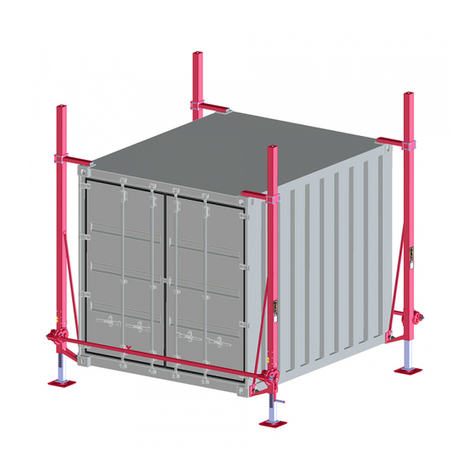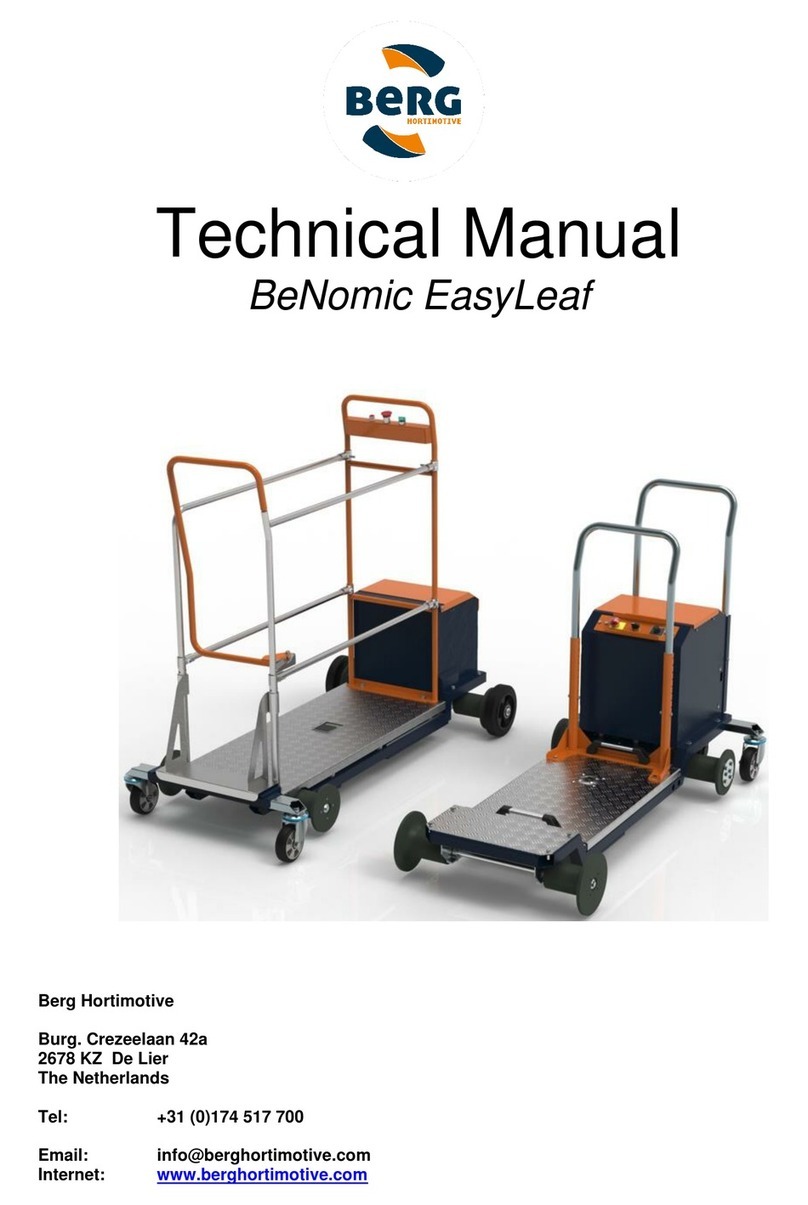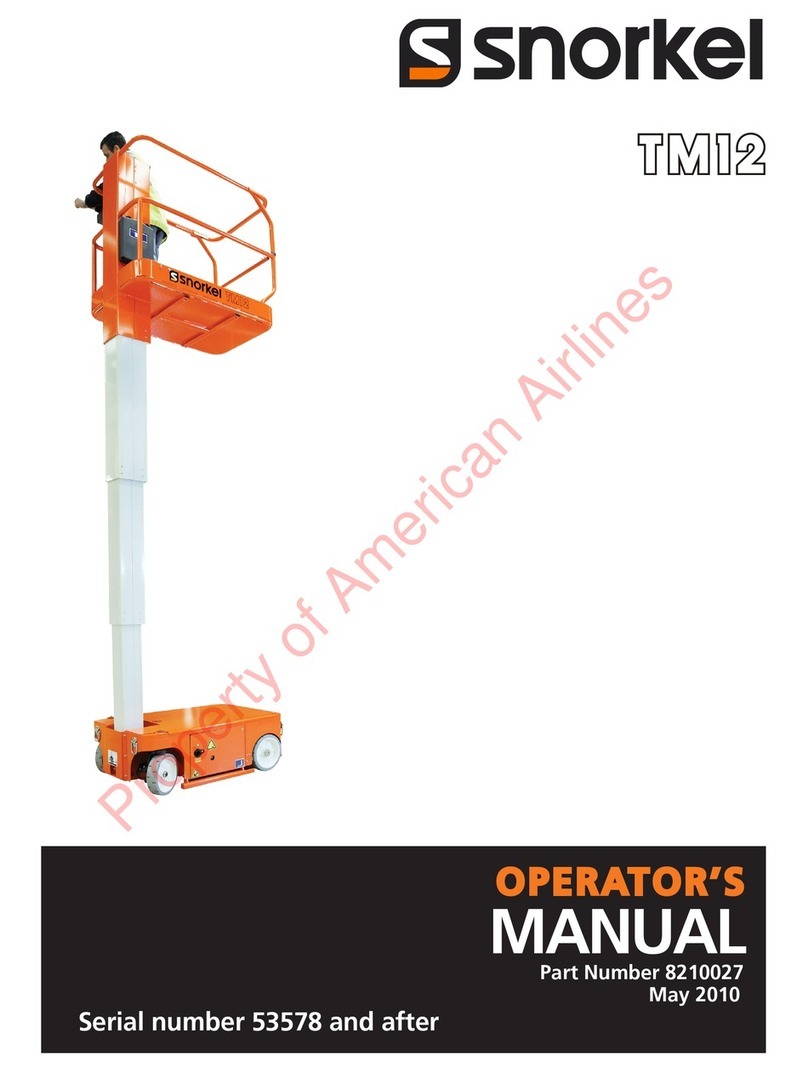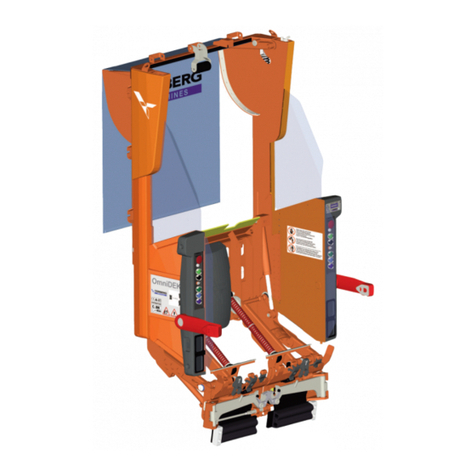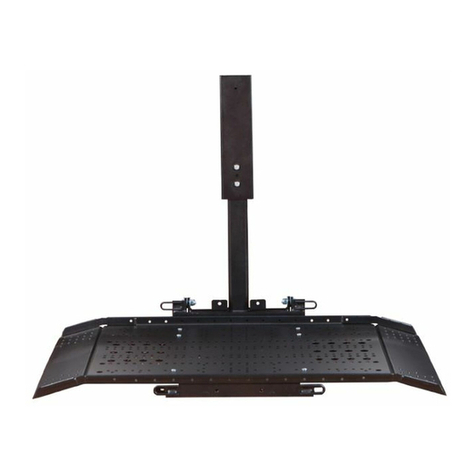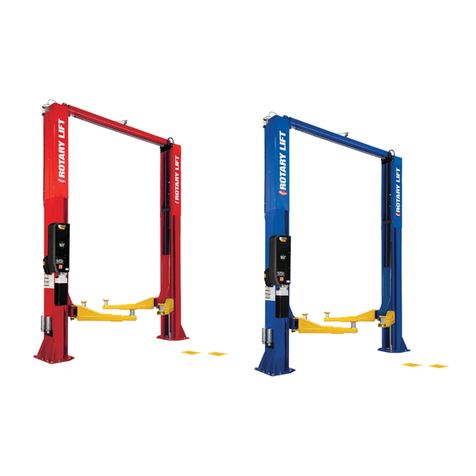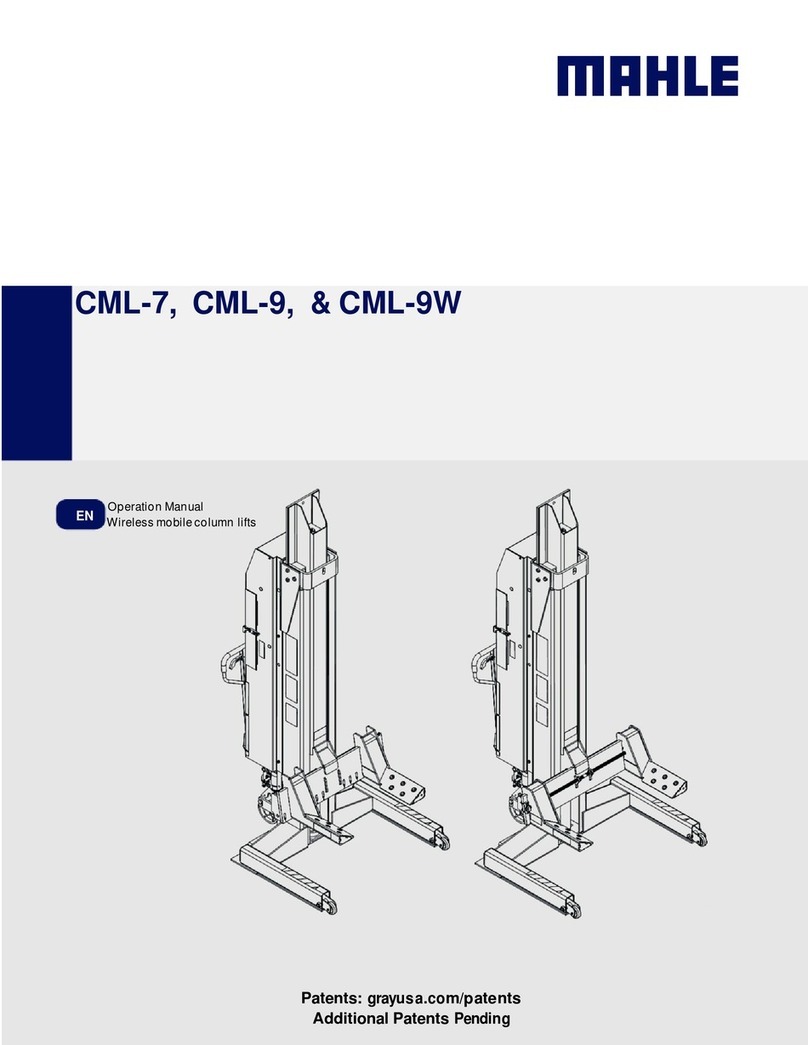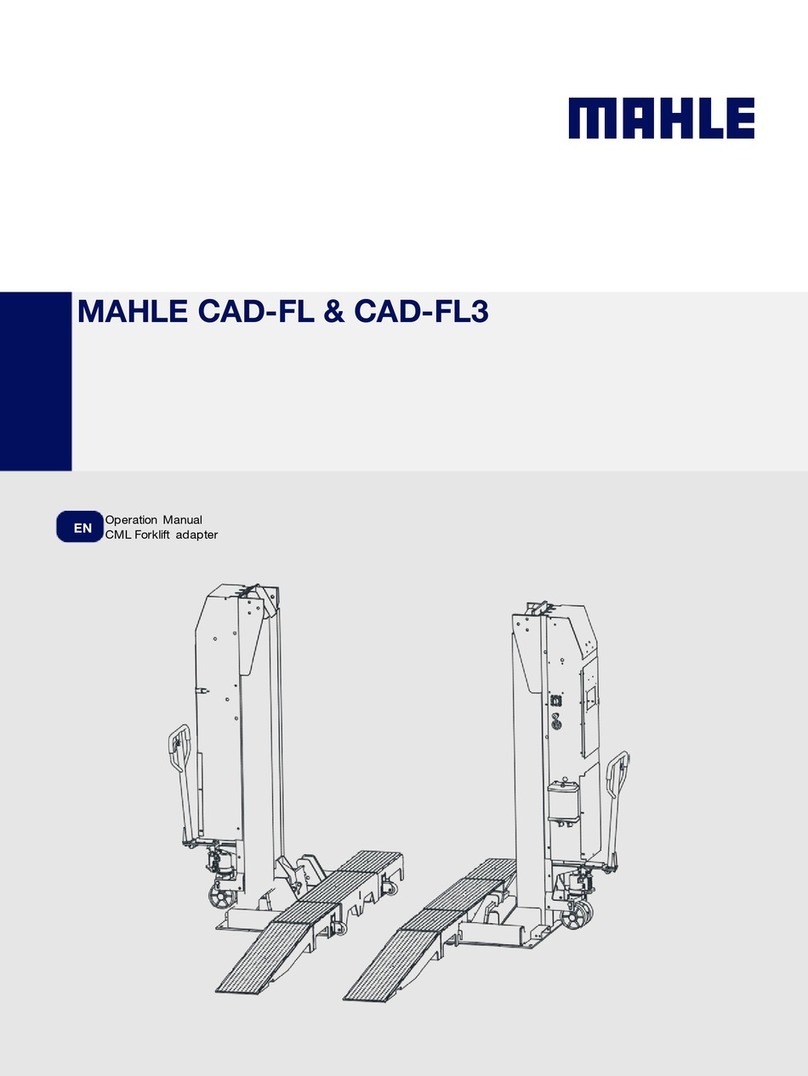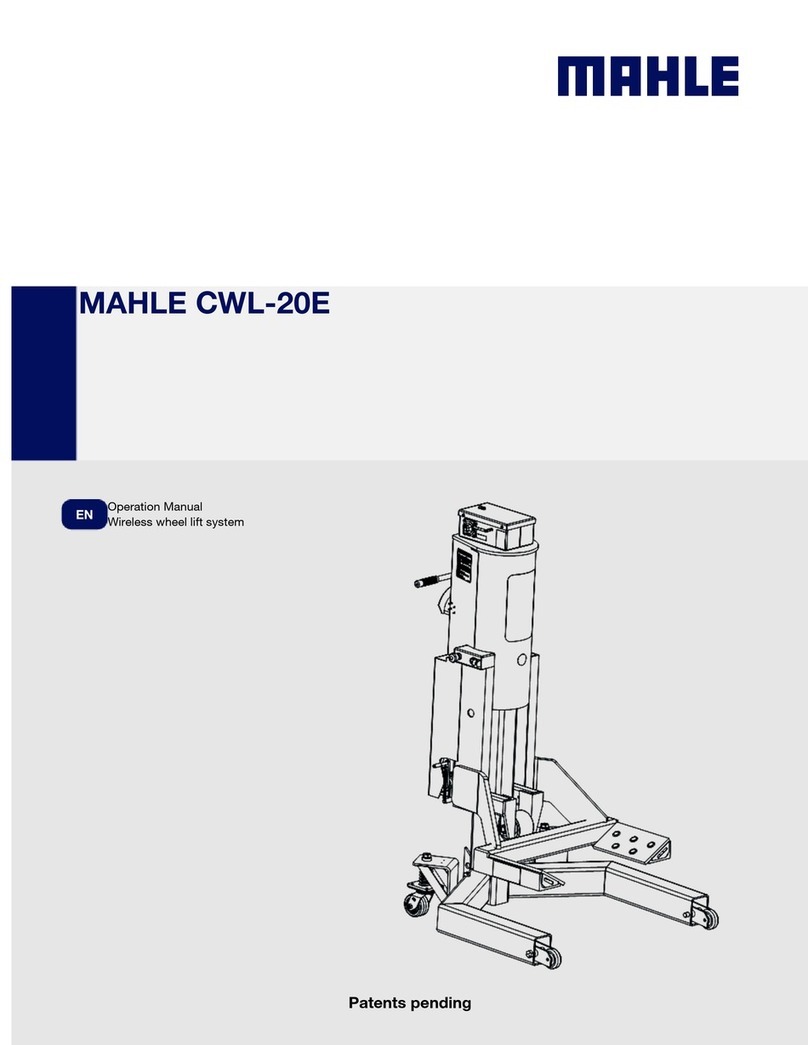
|
|
7. Operation
WARNING - This section discusses the appropriate and
safe methods for using the jack to raise and lo er a
vehicle. Safe operation is not limited to simply raising
and lo ering a vehicle - it also includes adequate
preparation before the vehicle is lifted. Failure to follo
all of the steps outlined in this section could result in
serious injury or death.
7. Preparing to lift
1. Make sure the load does not exceed the rated capacity
of the jack (20,000 lbs. / 9,070 kg.)
2. Inspect the jack for signs of ear or damage (see
“Inspection Instructions” in Section 8). The jack should
be immediately removed from service if you detect any
abnormal conditions or signs of damage that suggest
the jack ill not ork properly or safely — When in
doubt, don’t use the jack!
If you see any signs of ear or damage, or if there is any
indication that the jack is not performing normally,
immediately take it out of service and contact customer
service at the address and number sho n on the back
cover of this manual. NEVER use a jack that appears
damaged in any ay.
3. Transport the jack to the ork area by heeling it. You
can push or pull the jack. Wheel the jack across smooth
surfaces only.
Jolting caused by the heels catching on uneven
surfaces can cause physical strain and personal injury.
4. Select appropriate vehicle support stands and bring them
to the immediate ork area. Follo the instructions
supplied ith the vehicle stands. Use appropriate vehicle
stands to support the load immediately after lifting.
NEVER use the jack to support a load hile orking on a
vehicle. Failure to follo all of these instructions can result
in jack instability and loss of a load.
5. Examine the ork area. Use the jack only on hard, level
surfaces capable of safely supporting the load. The jack
must ALWAYS remain in direct contact ith the floor.
Clear the surrounding area of personnel, tools,
equipment, or any other objects that ould interfere ith
the use of the jack. If these conditions cannot be met,
move the vehicle and jack to an area here the lift can be
performed safely.
6. Chock the vehicle’s heels. When raising a vehicle from
one end, al ays chock the heels that ill remain on
the ground. Make sure at least t o heels of the vehicle
remain in contact ith the floor at all times — NEVER
use the jack to raise all four heels of the vehicle from
the floor.
7.2 Operating the air valve to raise a load
Once the lift has been positioned under the load to be
lifted (according to the safety instructions on the lift),
operate the air valve slo ly to carefully raise the saddles
to engage (capture) the lift points of the vehicle (Fig. 3).
After the saddles make contact ith the lift points,
visually recheck their position to be sure the load is
properly seated for lifting. Be careful not to put any part
of your body (e.g., arms, hands, fingers, etc.) bet een
the saddle and the lift point on the vehicle. When raising
or lo ering, the operator should check to make sure
nobody else is in the immediate ork area.
Fig. 3: Air valve operation
To lo er the lift, it may be necessary to raise the lift slightly
so the do n stop pa l can be disengaged from the do n
stop lug. If lo ering the vehicle on vehicle support stands,
follo the instructions for positioning and supporting the
load outlined in the stand instructions. If lo ering the load
to the ground, make sure that the ork area underneath
the vehicle is clear of obstructions before removing the
vehicle support stands. Disengage the do n stop pa l by
holding the lever hile pressing the air valve to the right
(i.e., the lo er position). Hold in the air valve and do n stop
lever until the lift can be removed from under the vehicle.
Air must bleed off for a fe seconds before the lift ill start
lo ering.
To avoid a crushing injury, you must make sure that no
objects or body parts are on the ground near the lift
platform henever the lift and/or the load are being
lo ered.
These operating instructions are designed to
supplement, not replace, the information and safety
instructions provided on the lift itself.
LIFT CONTROL LEVER
P US H
T O RA I S E
P US H
T O L OWE R
LIFT CONTROL LEVER
PU S H
T O R A I S E
P US H
T O L OW ER
To Raise
To Lower


